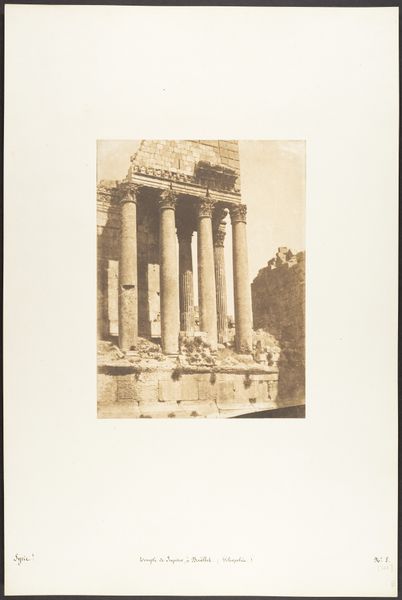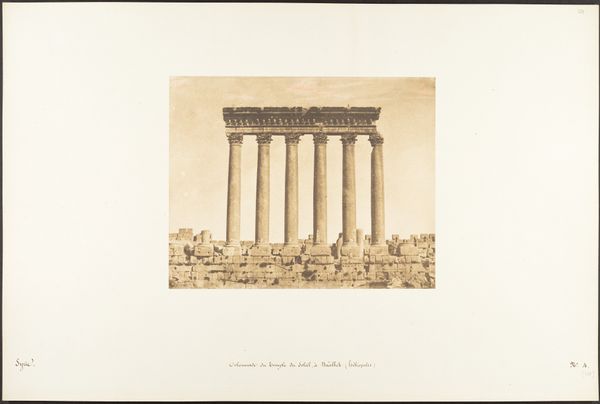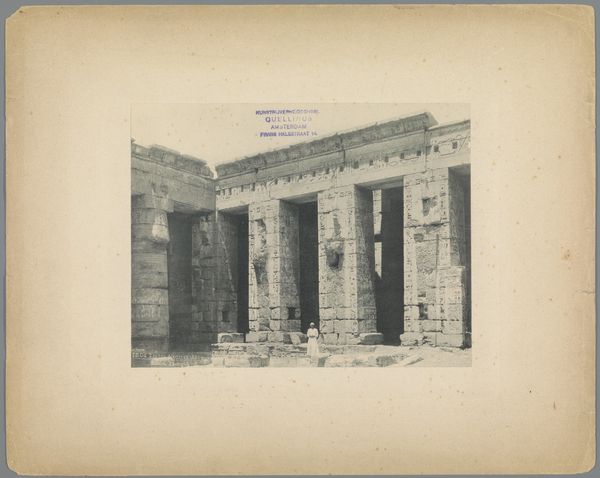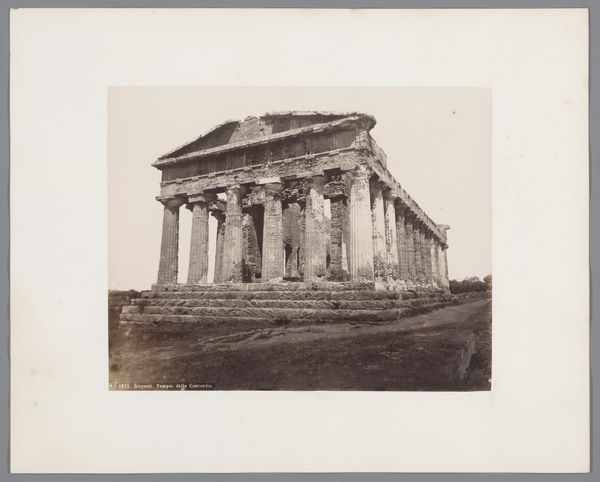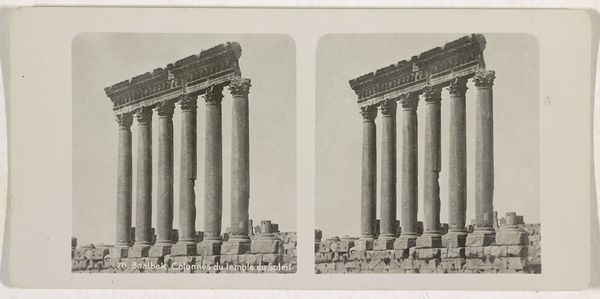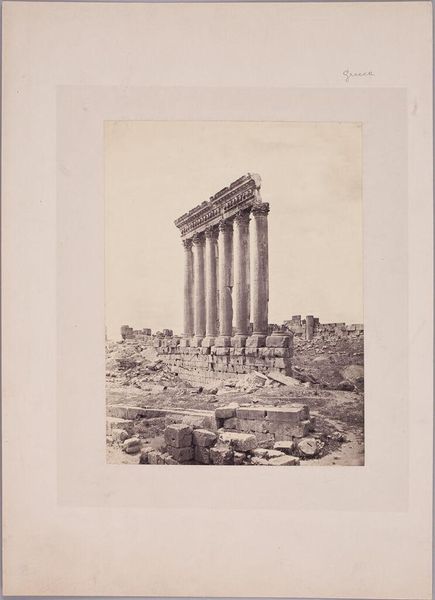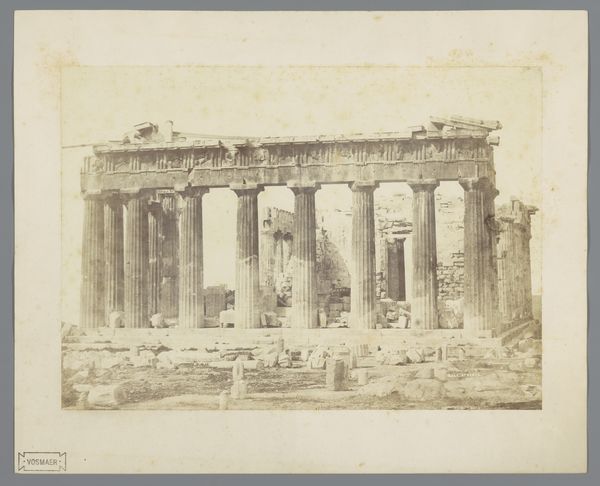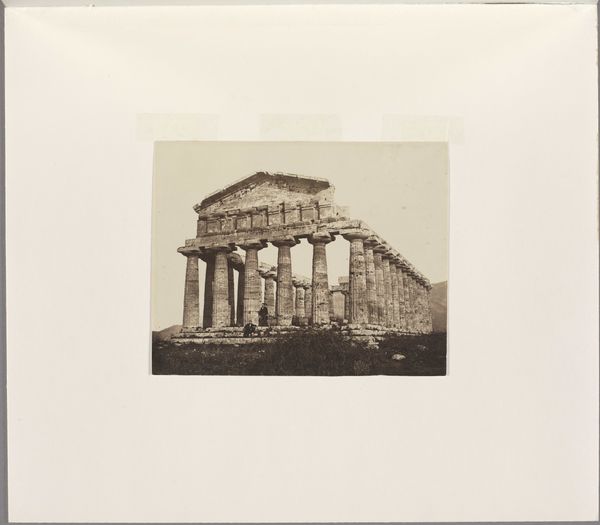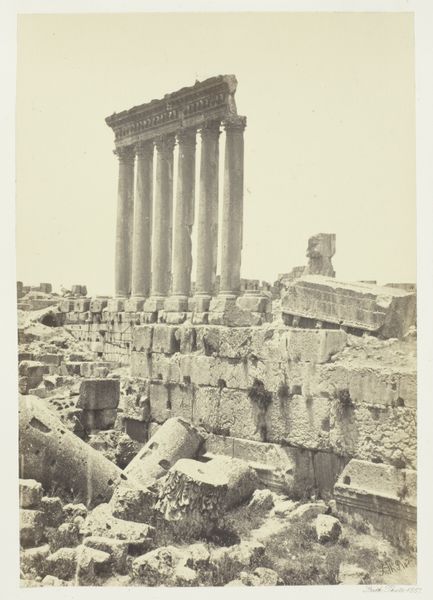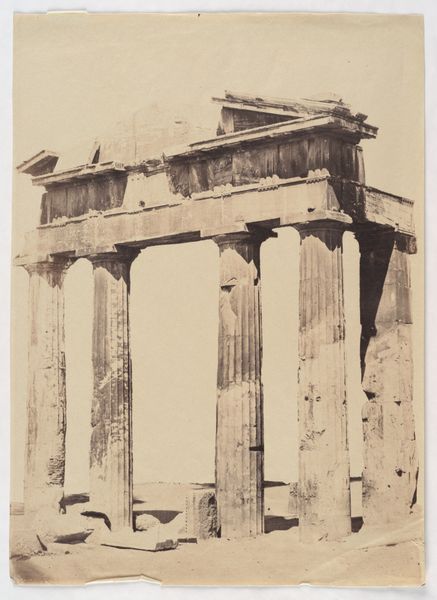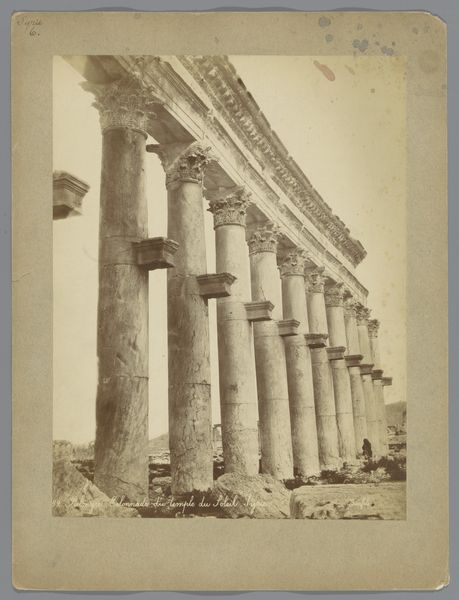
Colonnade du Temple du Soleil, à Baâlbek (Héliopolis) 1850
0:00
0:00
daguerreotype, photography, architecture
#
landscape
#
daguerreotype
#
photography
#
ancient-mediterranean
#
architecture
Dimensions: Image: 8 9/16 × 6 9/16 in. (21.7 × 16.7 cm) Mount: 12 5/16 × 18 11/16 in. (31.2 × 47.5 cm)
Copyright: Public Domain
Curator: Ah, yes, Maxime Du Camp's "Colonnade du Temple du Soleil, à Baalbek (Héliopolis)," taken around 1850. A daguerreotype, capturing the ancient grandeur of the Temple of Jupiter. Editor: It's haunting. Not quite ruin porn, but close. You see these massive pillars, sun-bleached into almost nothingness. Feels like I’m looking at a ghost of an empire. Curator: Indeed. Consider Du Camp's framing—the fragmented entablature, the eroded column bases. These aren’t mere aesthetic choices; they highlight the transience of even the most monumental structures. Editor: I suppose, but I think there’s a strange magic in the desolation. You feel small staring up at that skeleton, imagining what once existed. Does that sound ridiculous? Curator: Not at all. The composition emphasizes a dialectic between verticality and horizontality, establishing the columns as enduring markers of temporal transition. Look at how light refracts. Editor: (Laughs softly) Refraction is just a fancy word for the way light dances, no? Seriously, though, it creates this luminous veil. Feels less like stone, more like dreams were turned into pillars. What’s a 'daguerreotype,' anyway? Curator: An early photographic process using a silvered copper plate, remarkable for its detail and unique tonal range. The texture it renders speaks to both documentary accuracy and, paradoxically, ethereal interpretation. The artist is inviting us to scrutinize light's effects as a record of decay. Editor: That feels contradictory: documenting decay to escape it somehow? Du Camp gives us this ruin, bathed in dreamy, sepia tones that manage to soften stone. Like holding a moment as it vanishes. He captures beauty, but doesn’t forget what was left behind. Curator: He freezes a historical moment—an act that seeks to deny what time inherently asserts. Ultimately the image provides layers that provoke emotional, artful and analytical perspectives to a timeless site. Editor: Beautifully said. It certainly got my imagination firing. A ghostly image holding history within it.
Comments
No comments
Be the first to comment and join the conversation on the ultimate creative platform.
